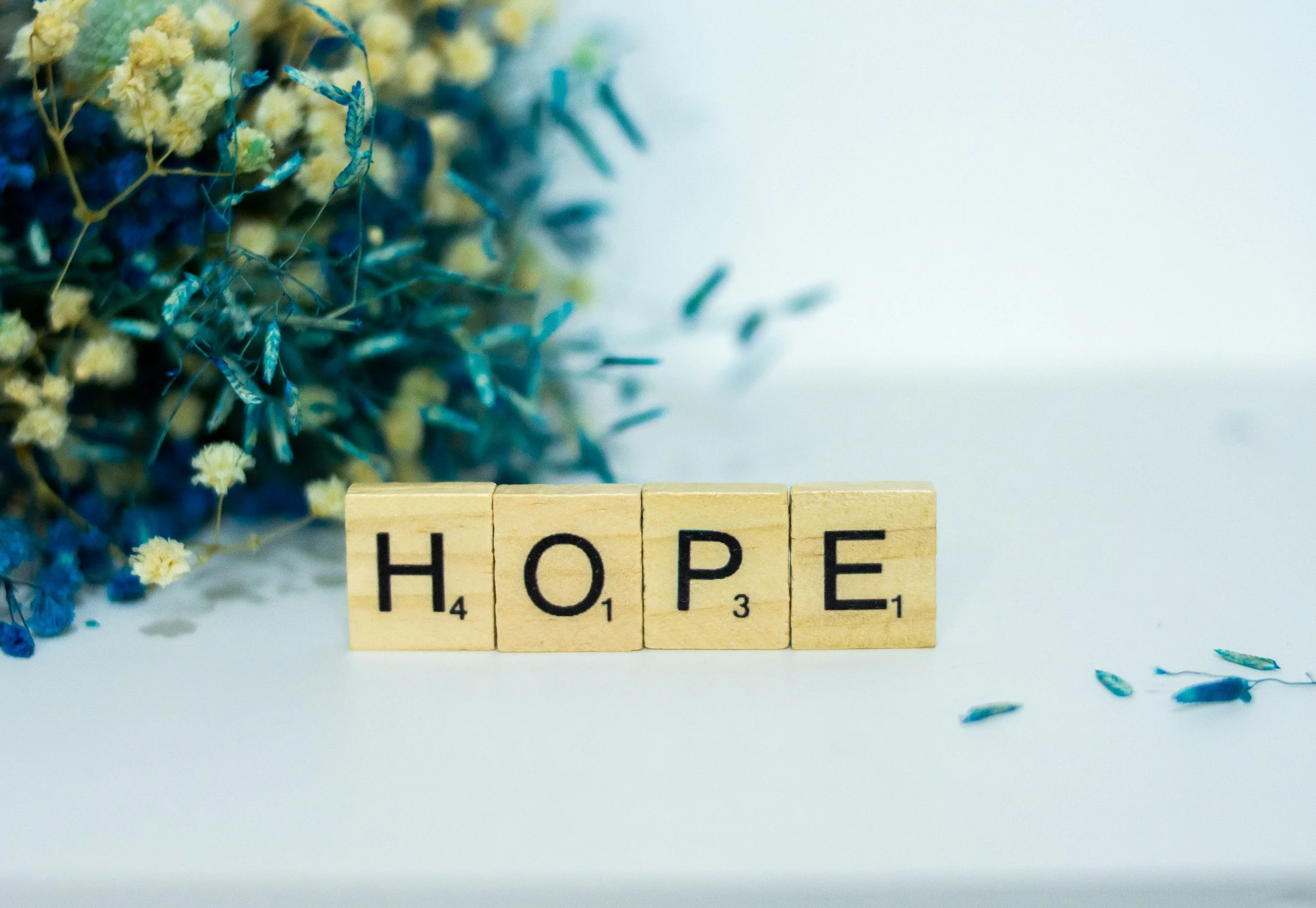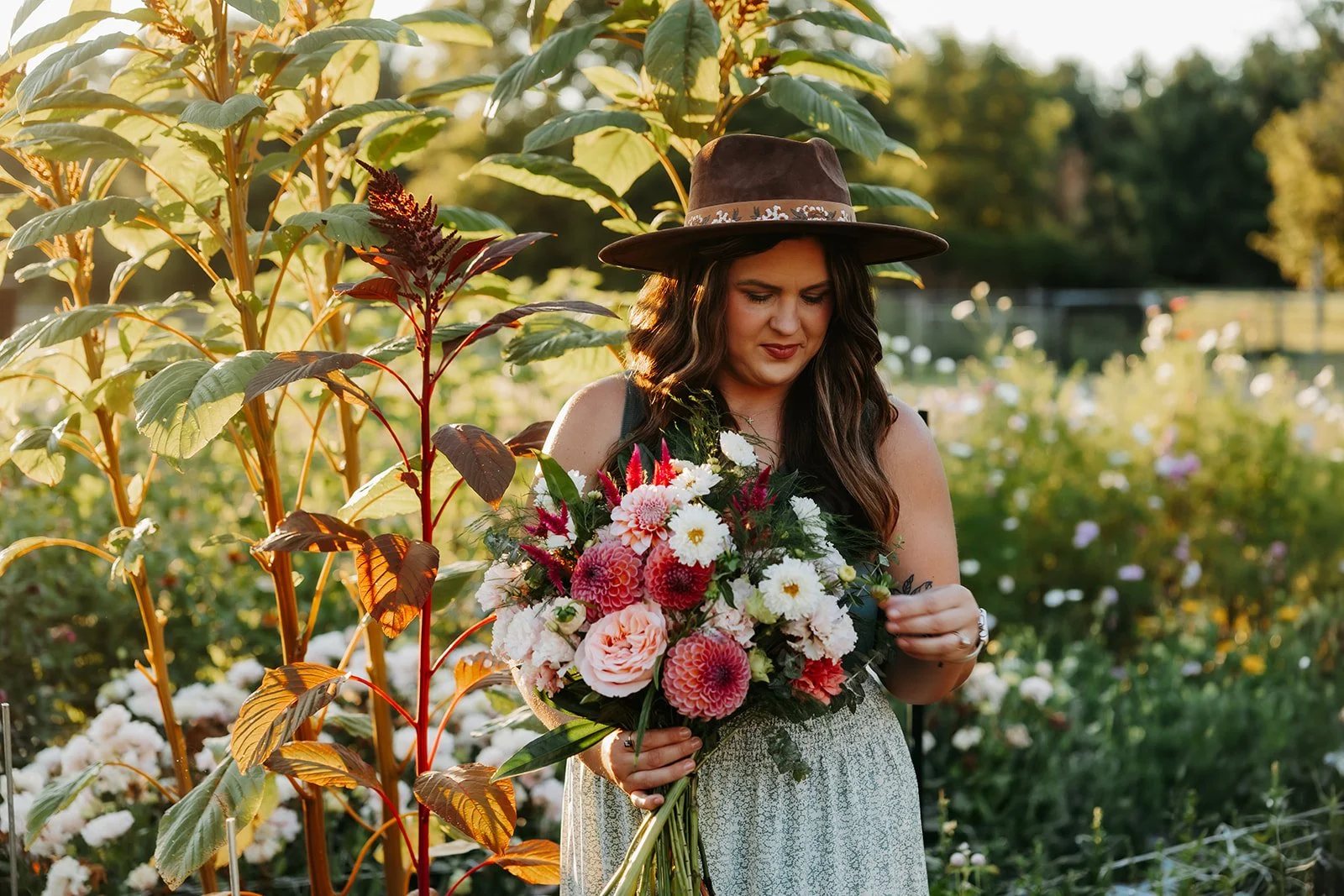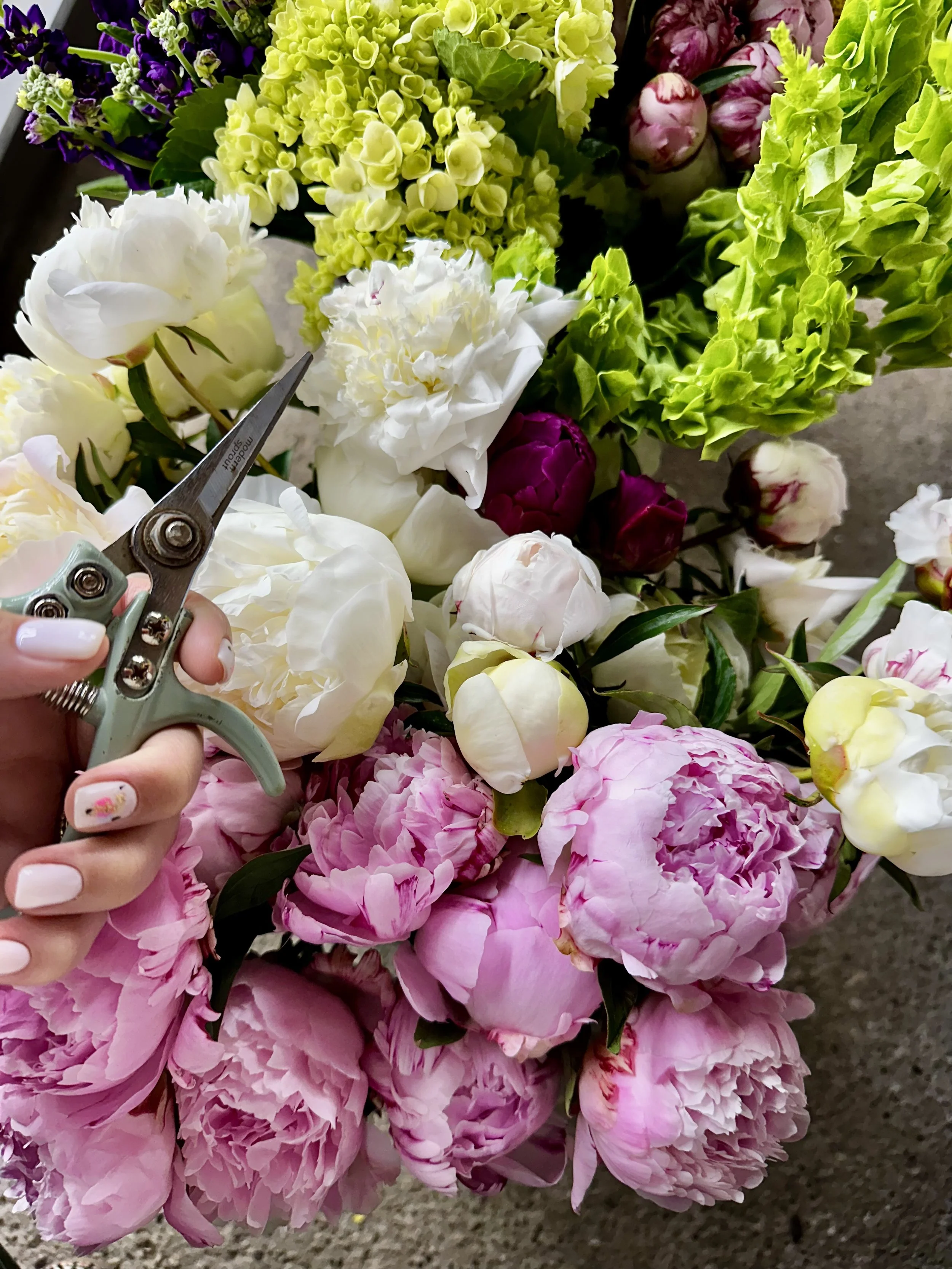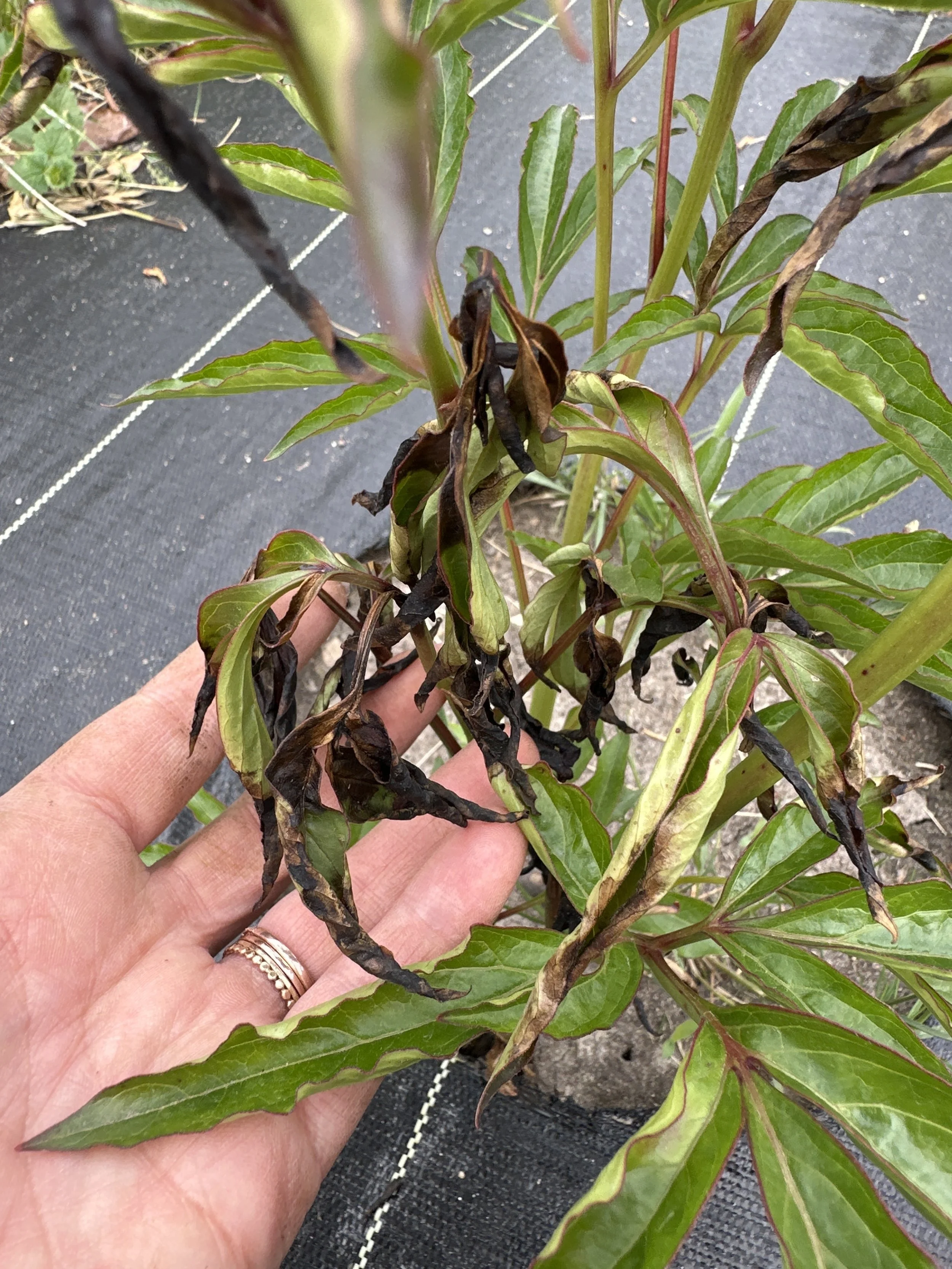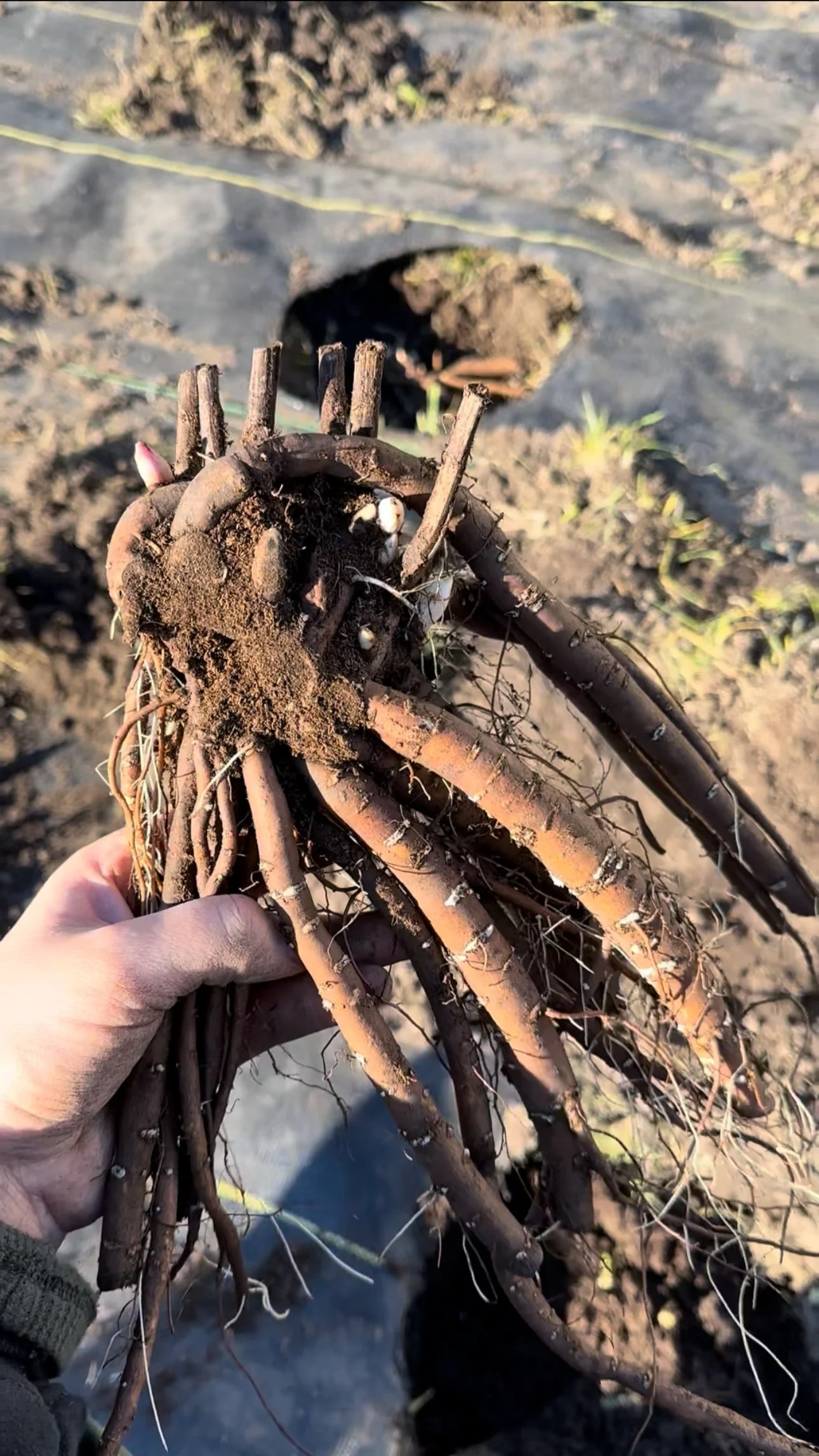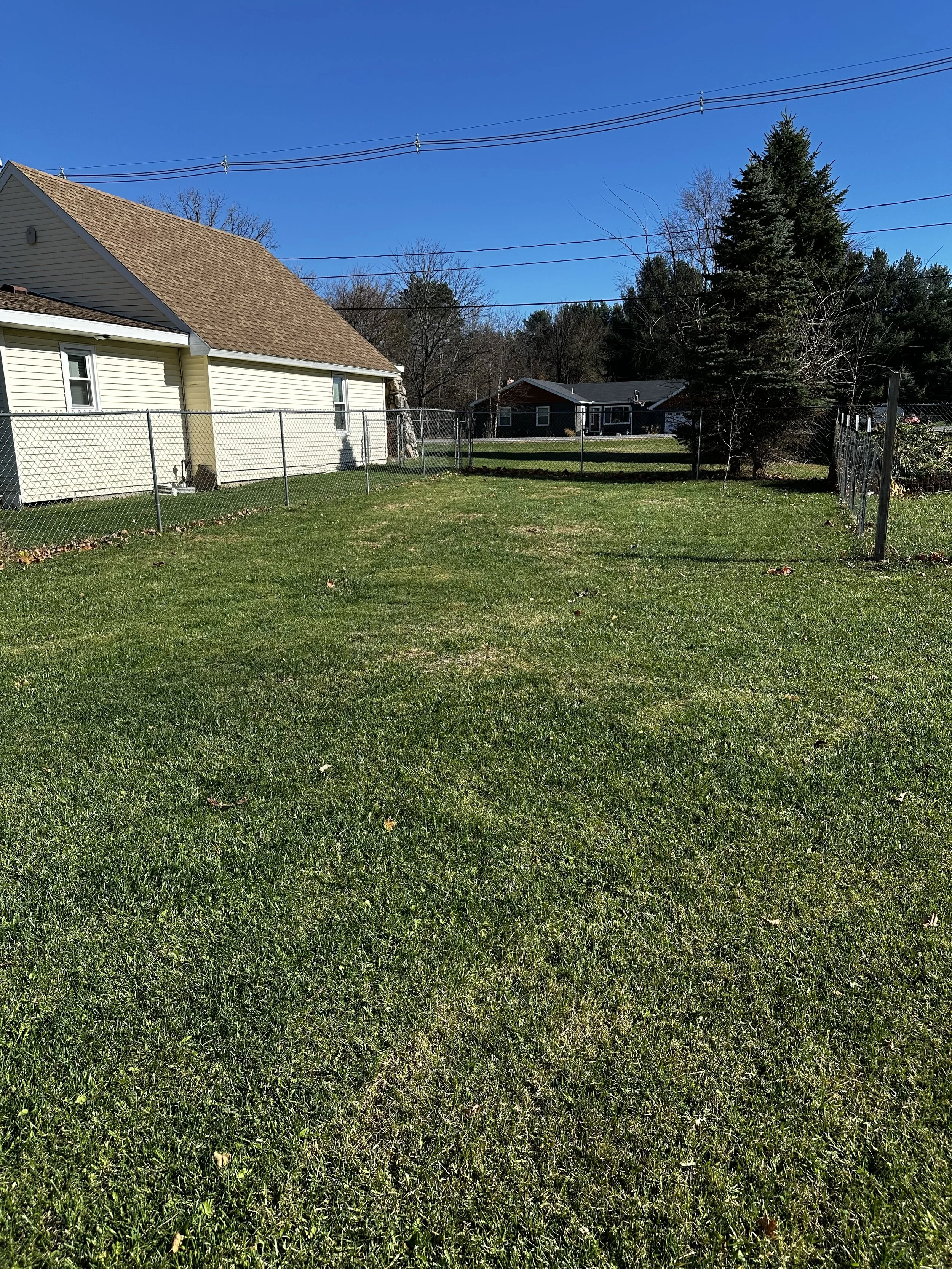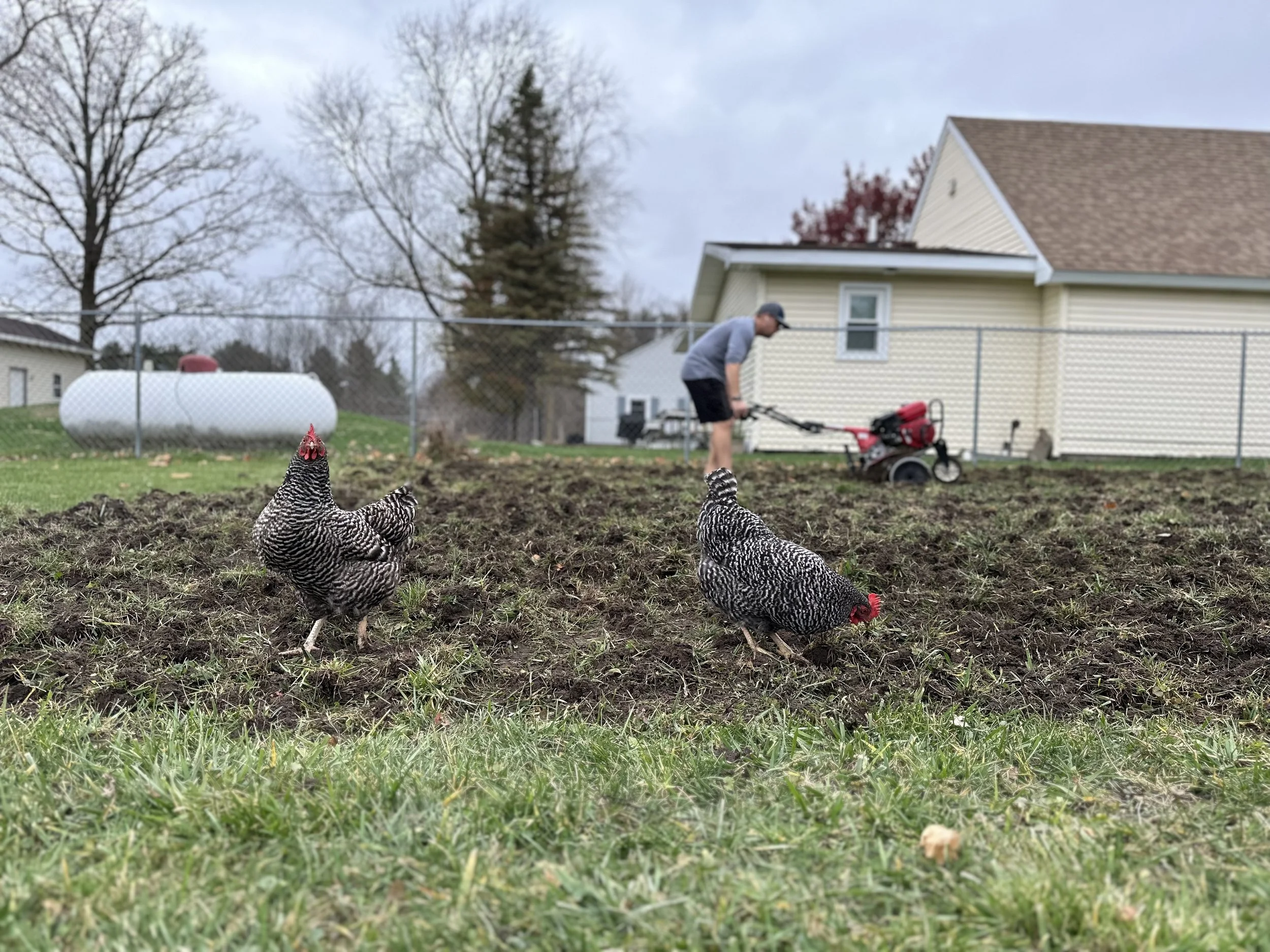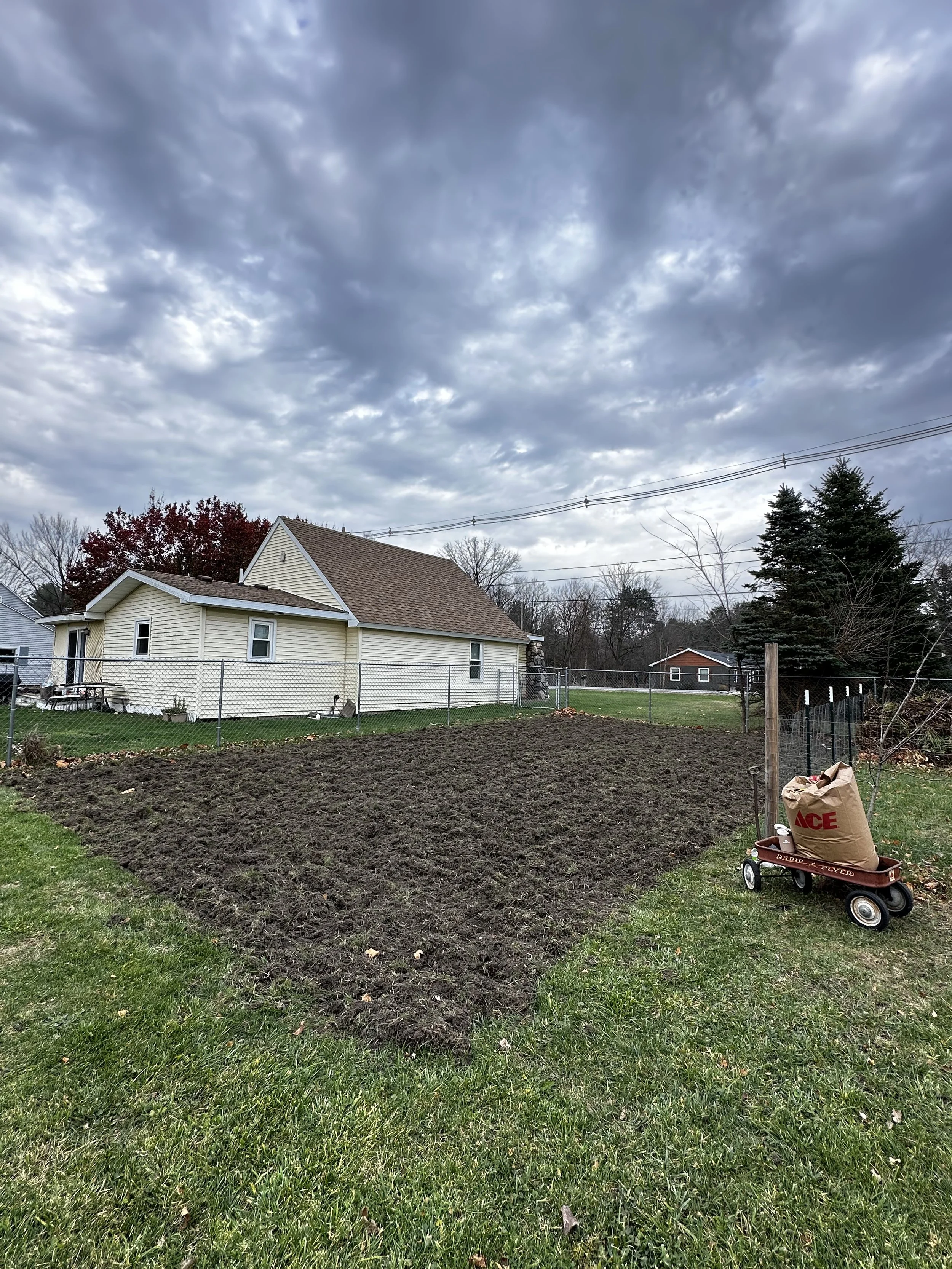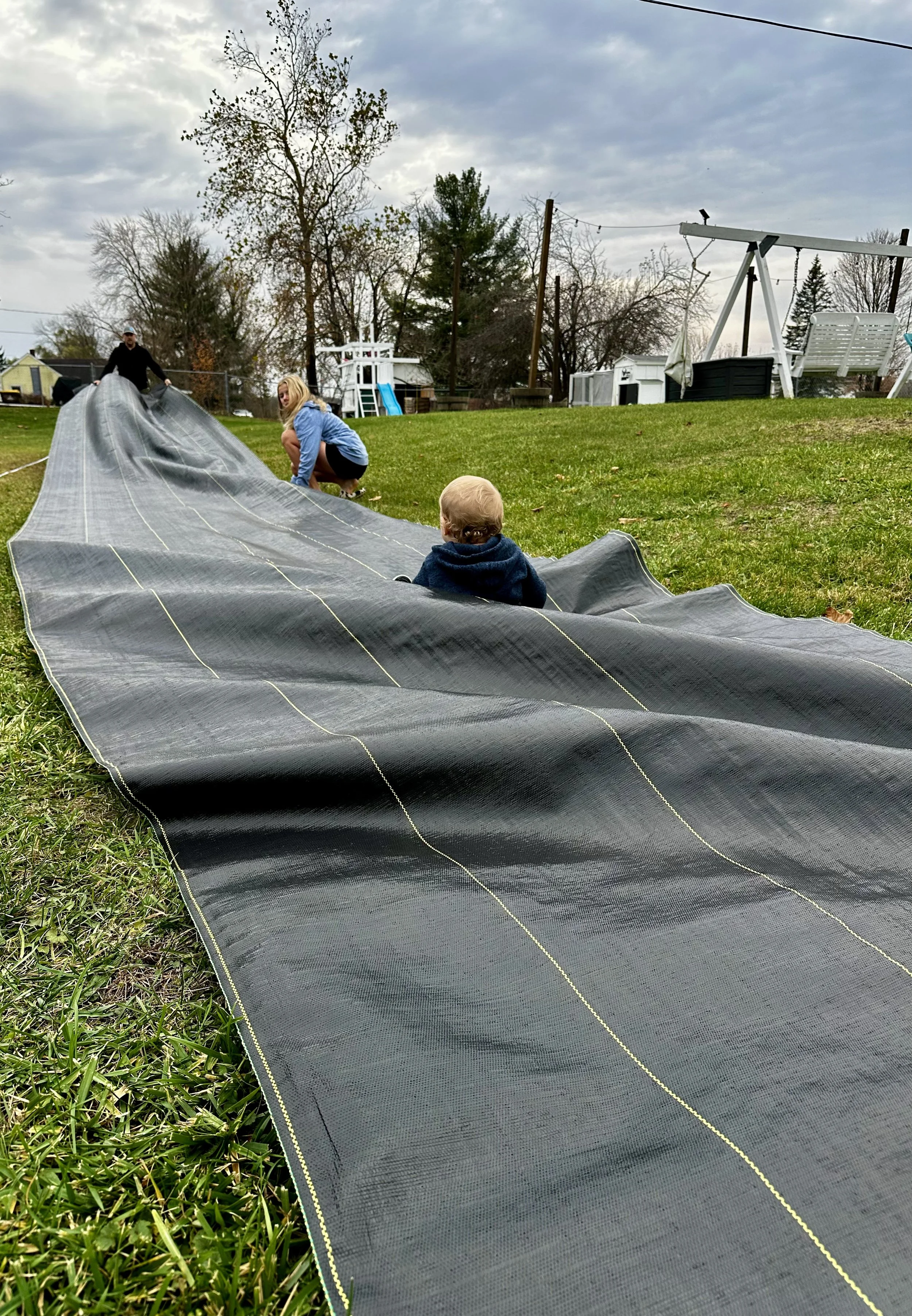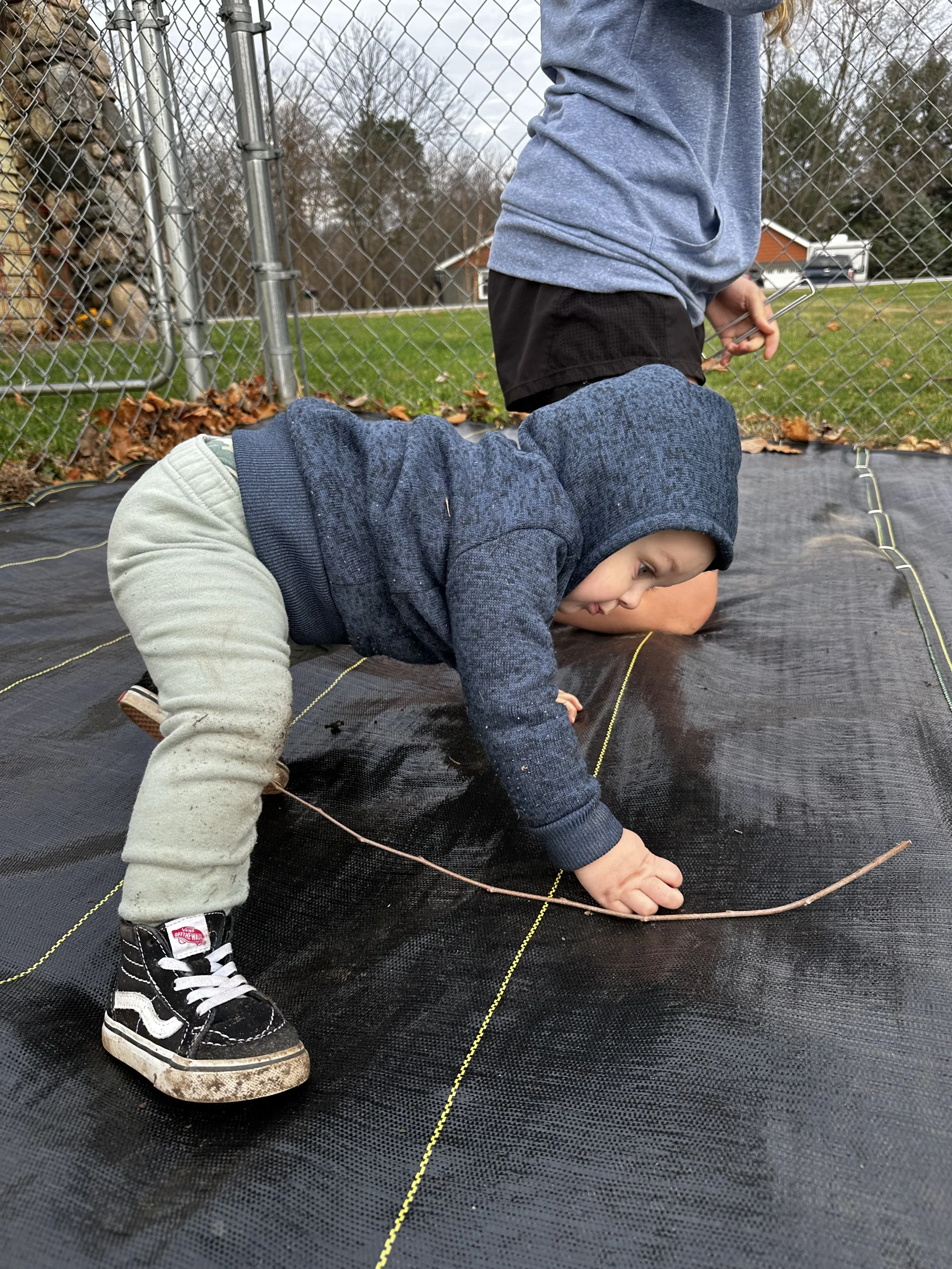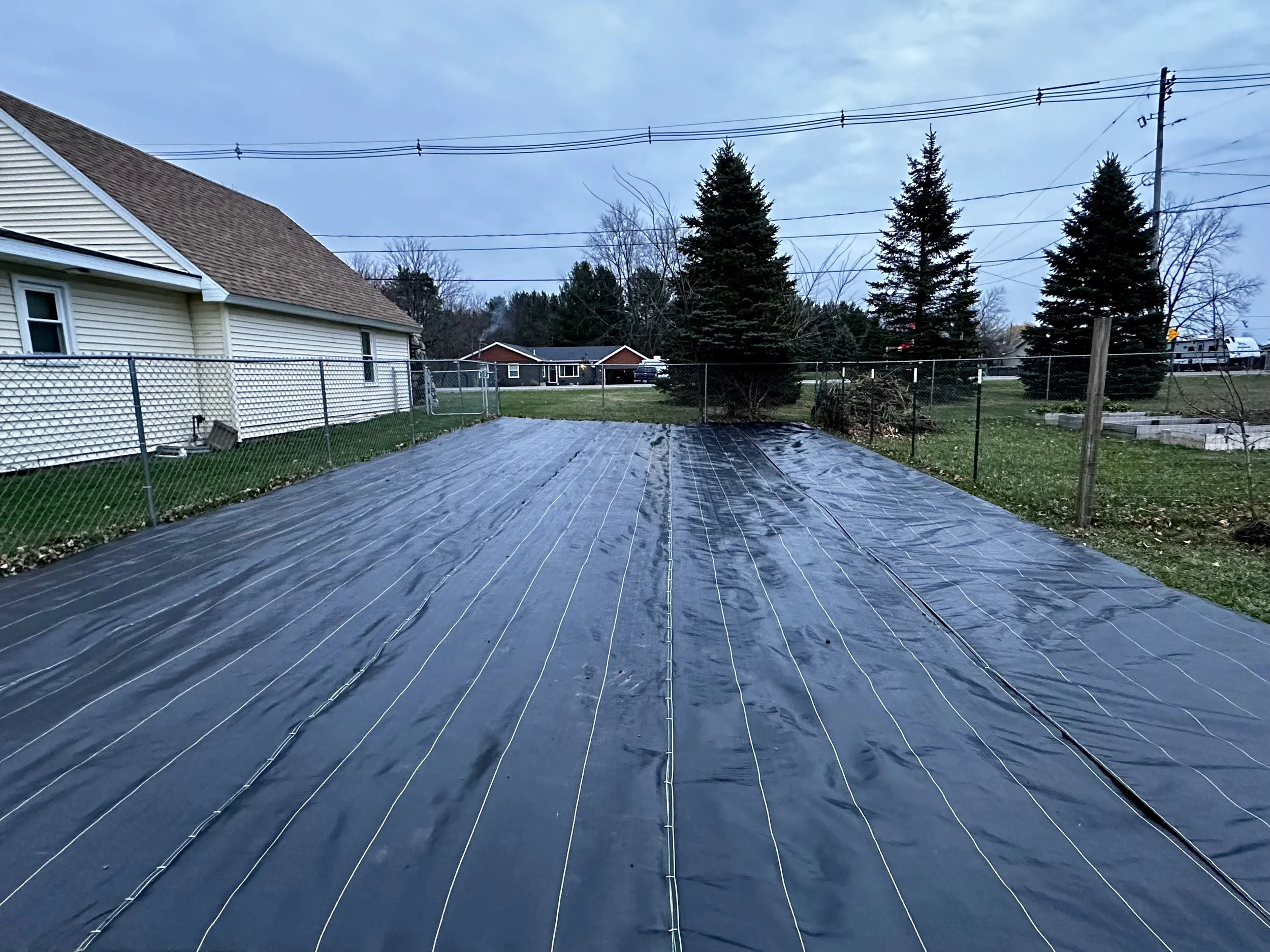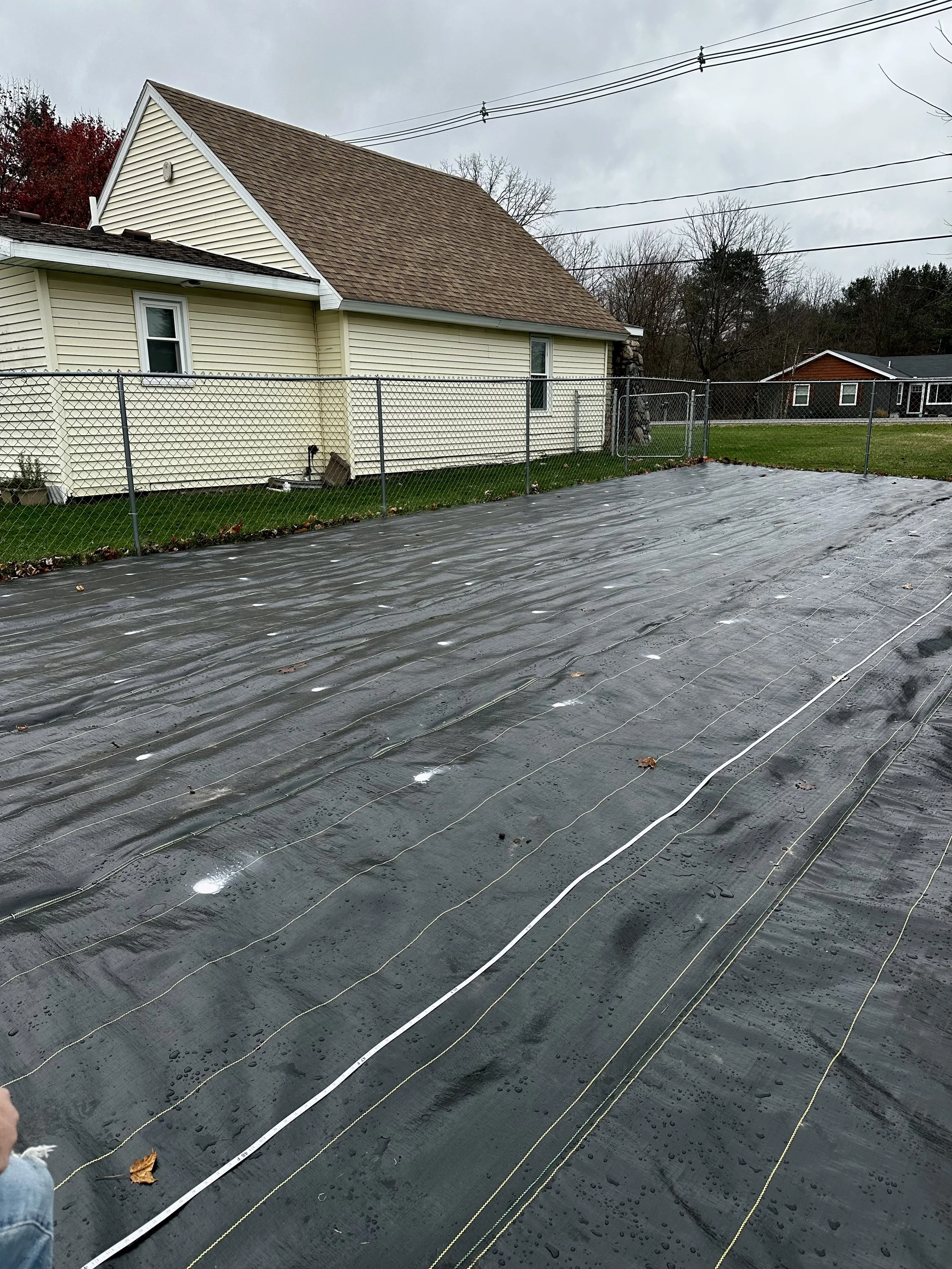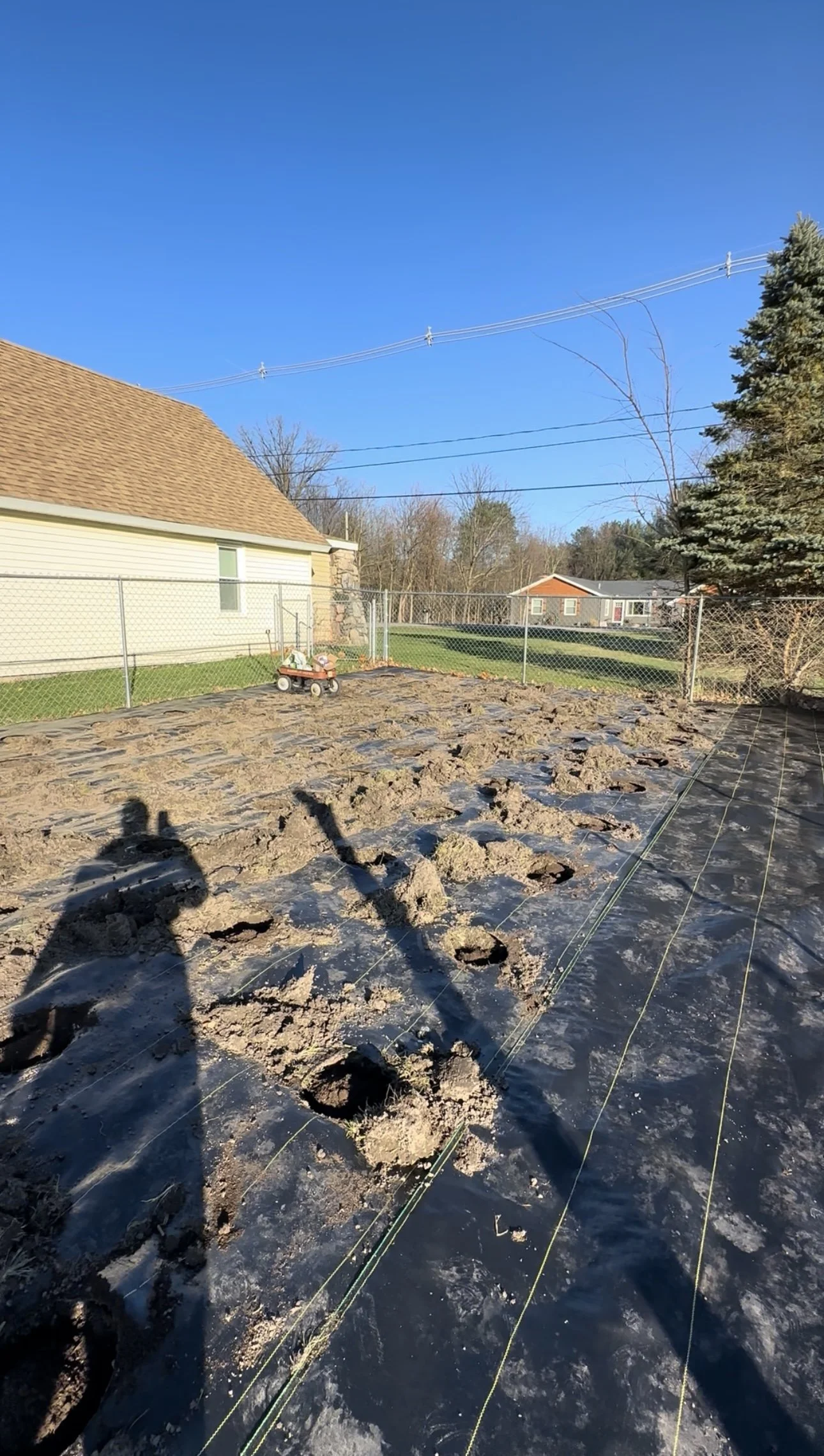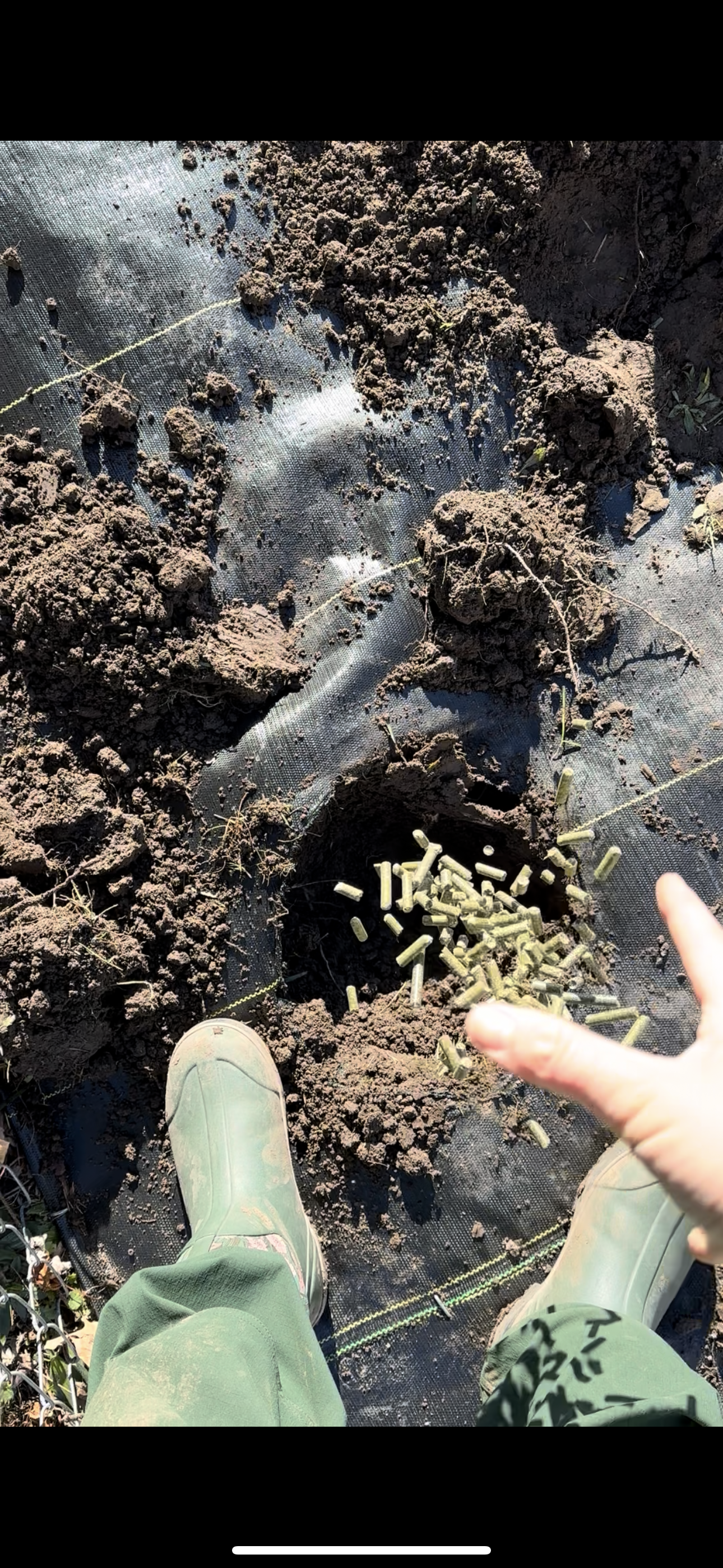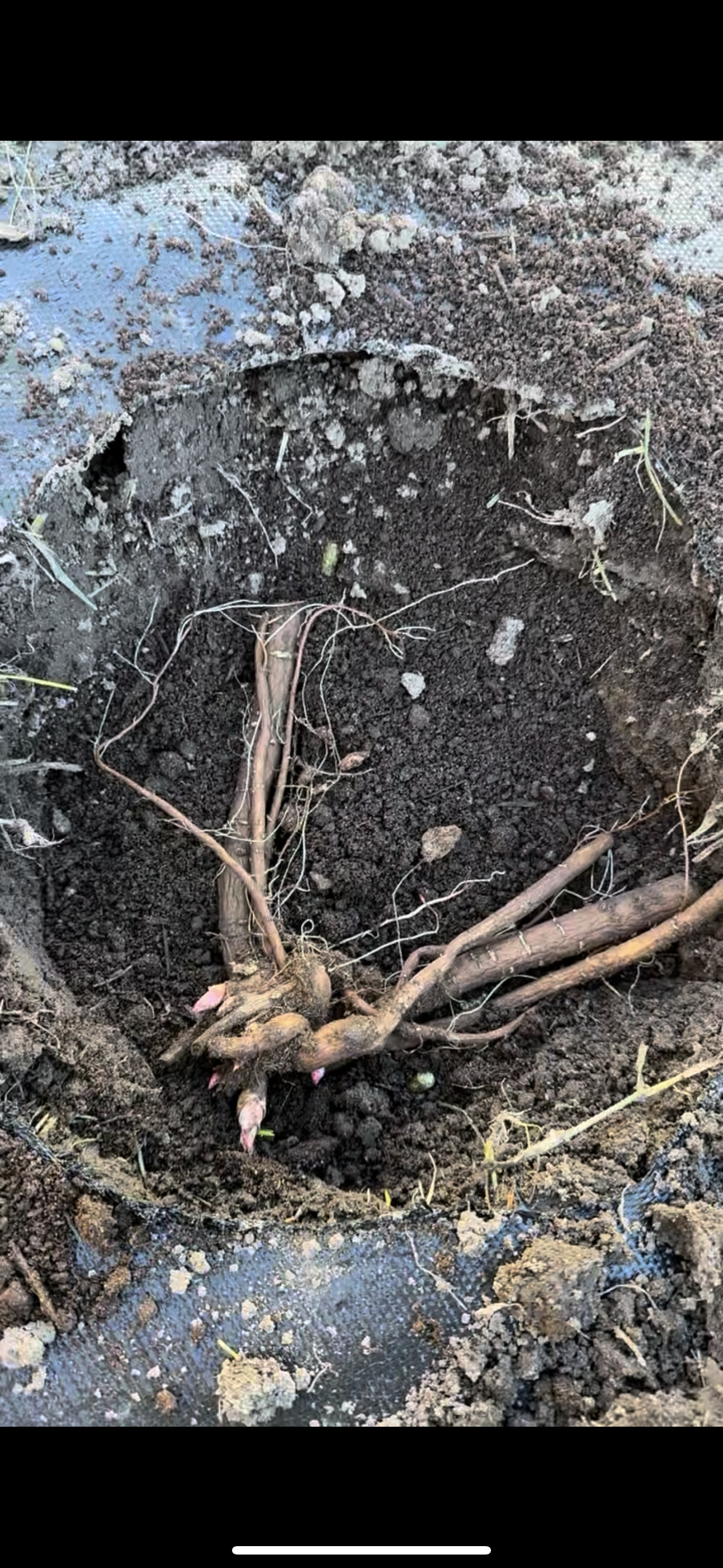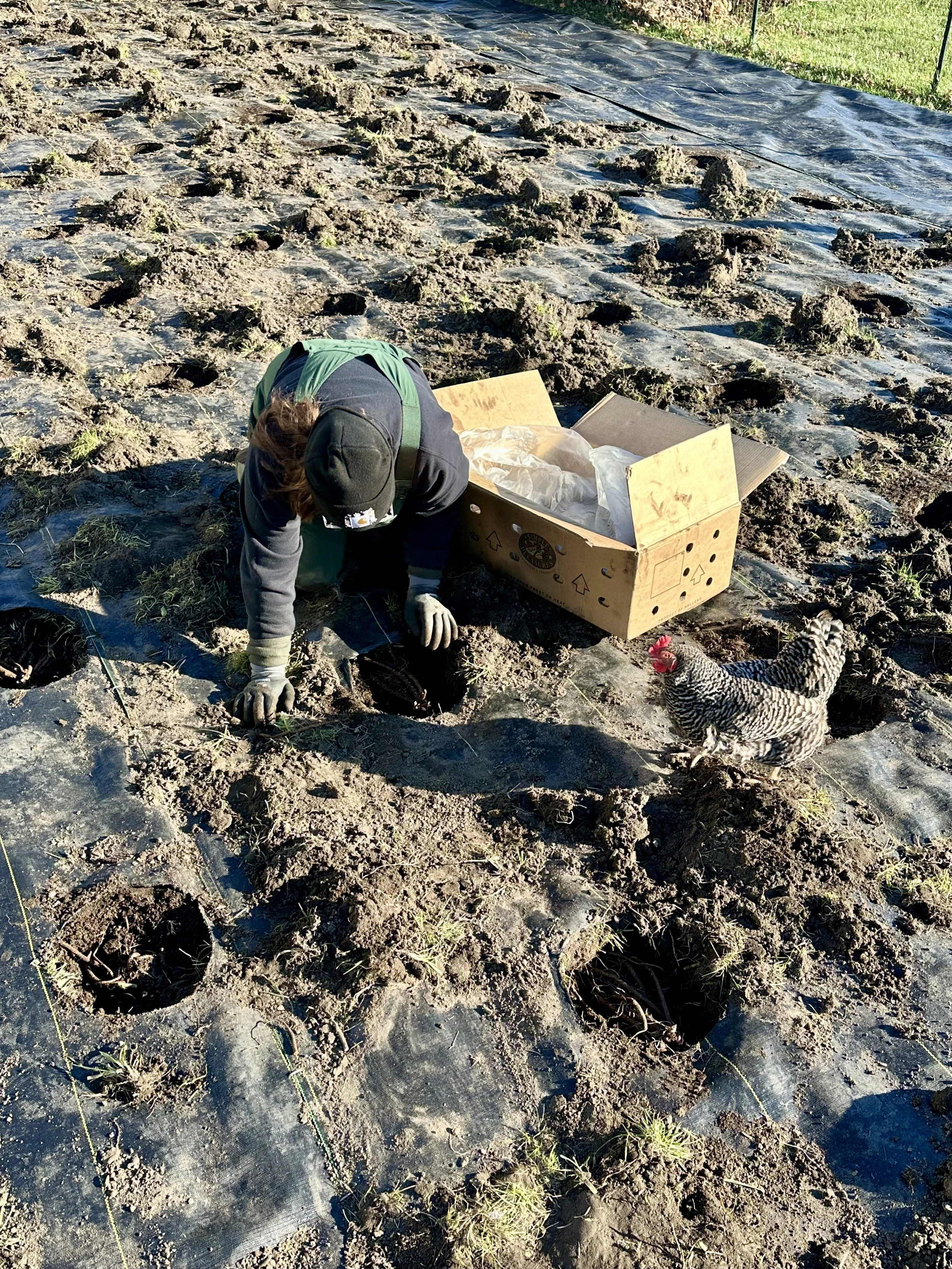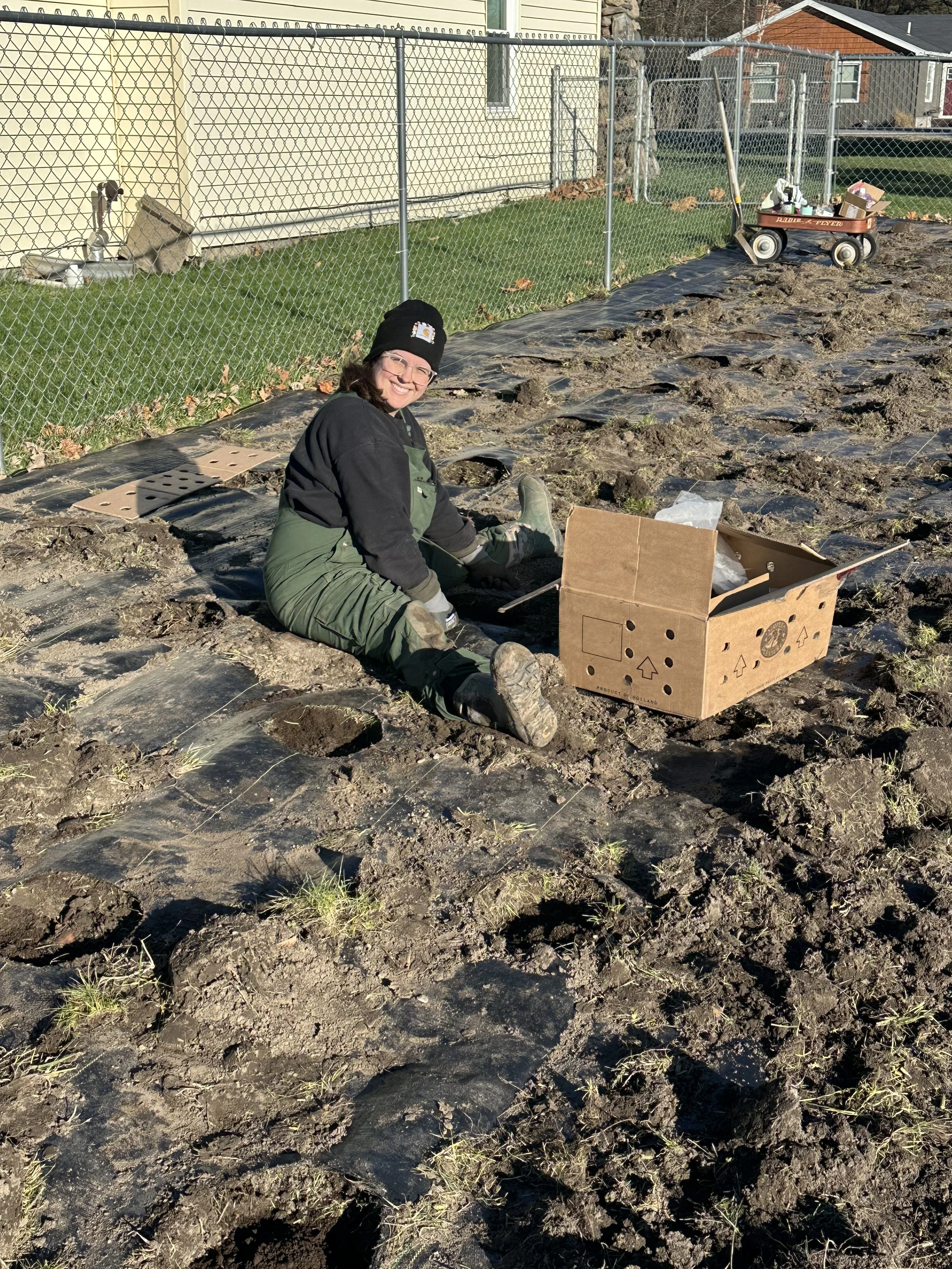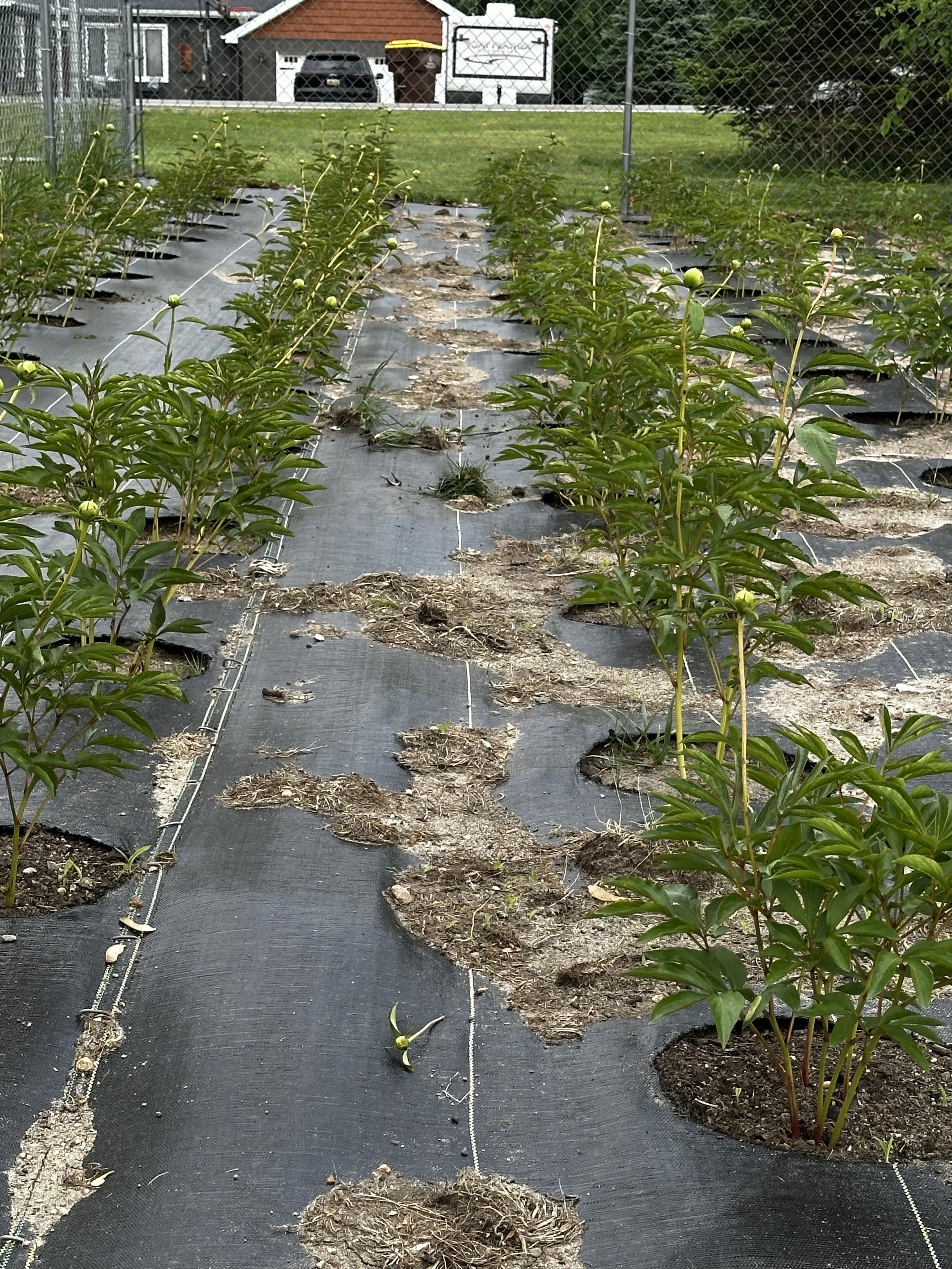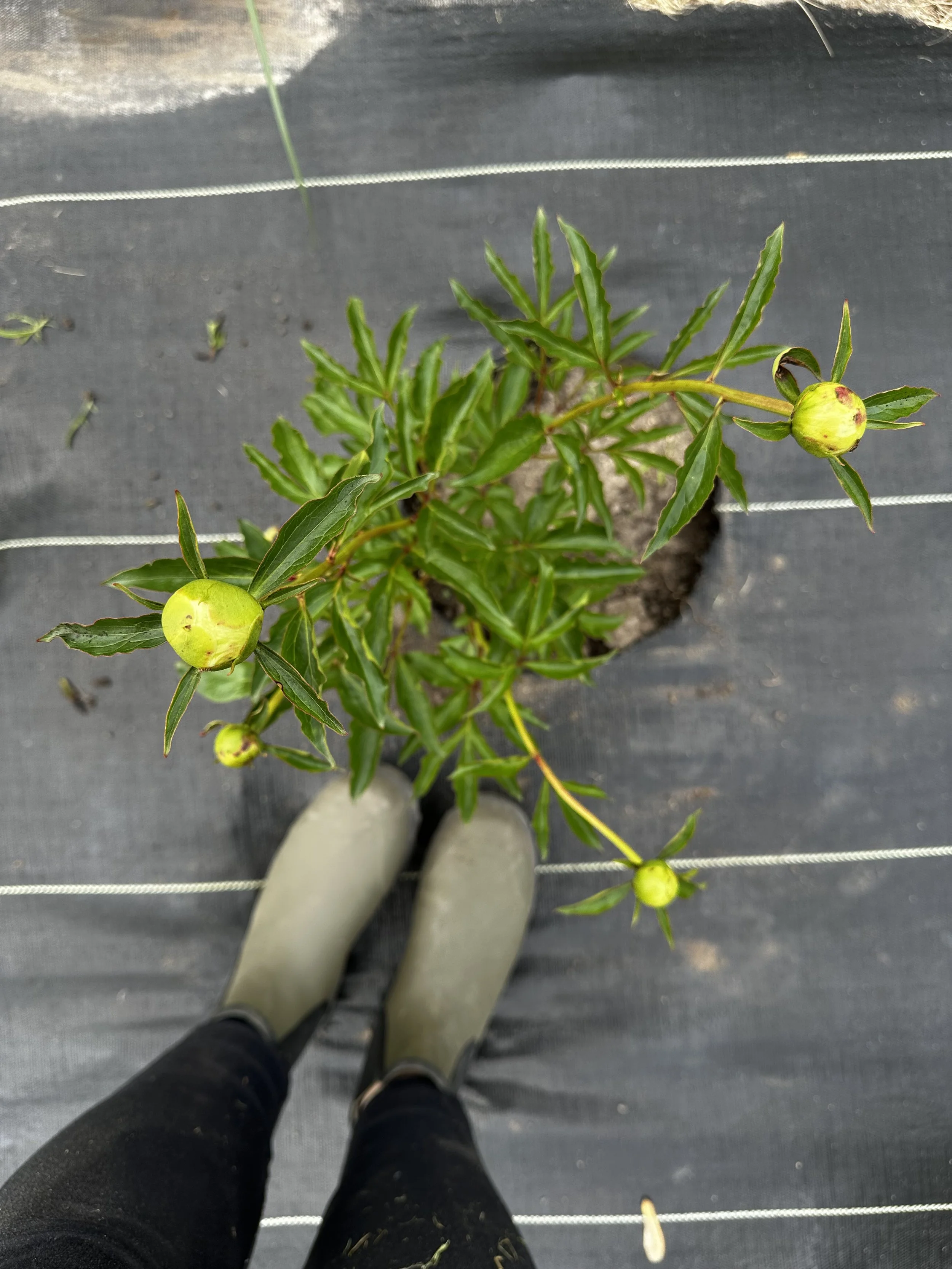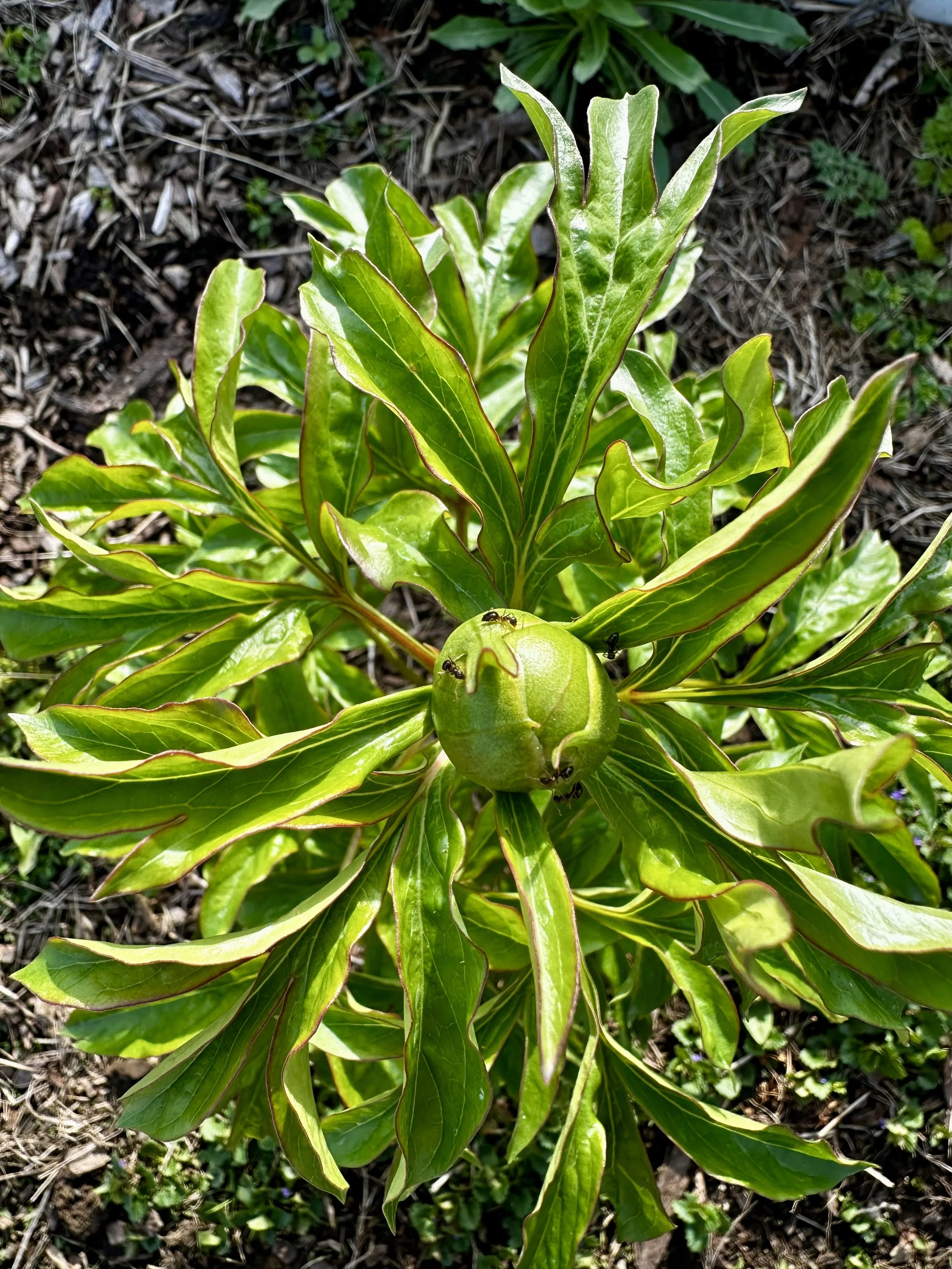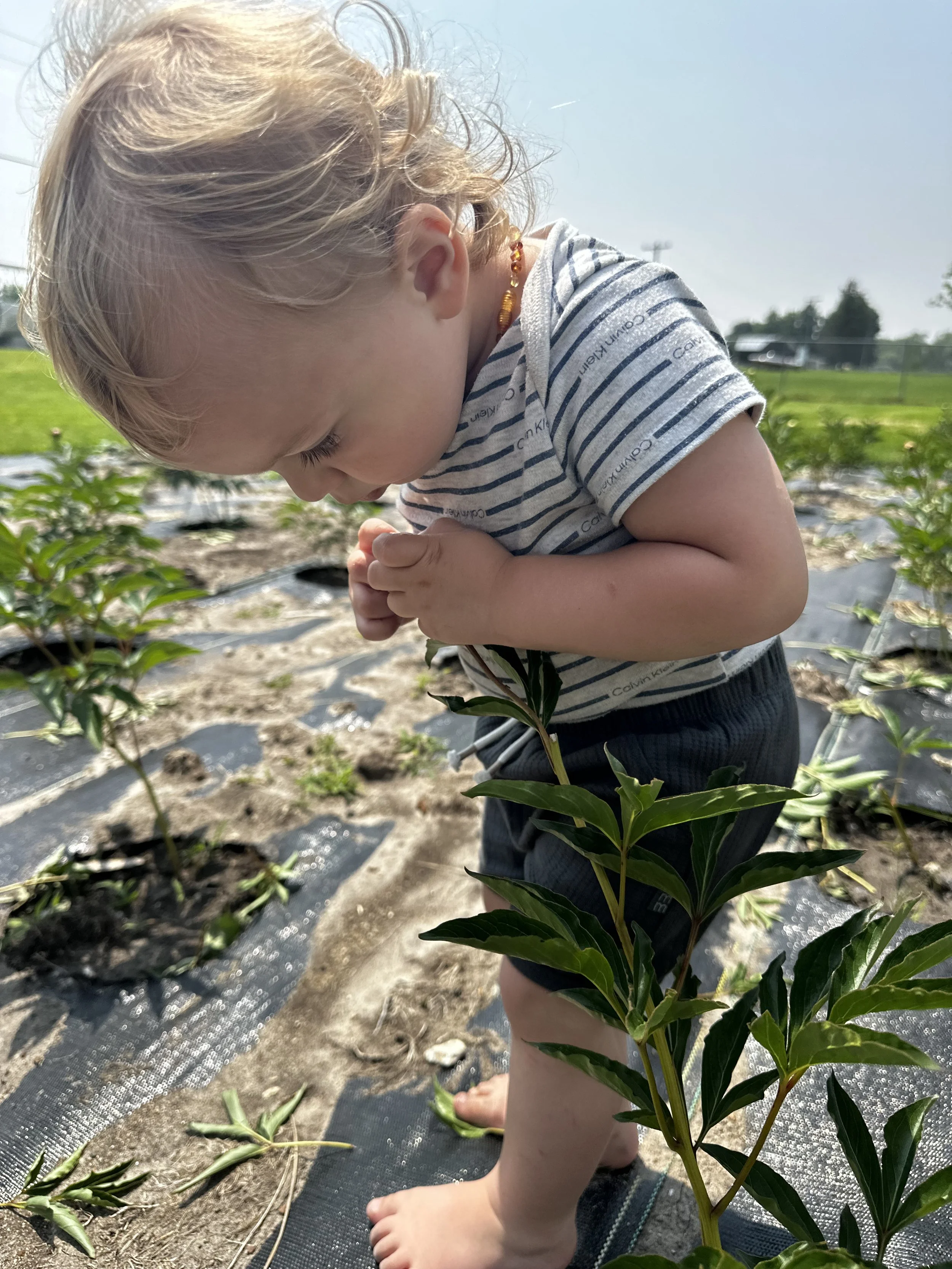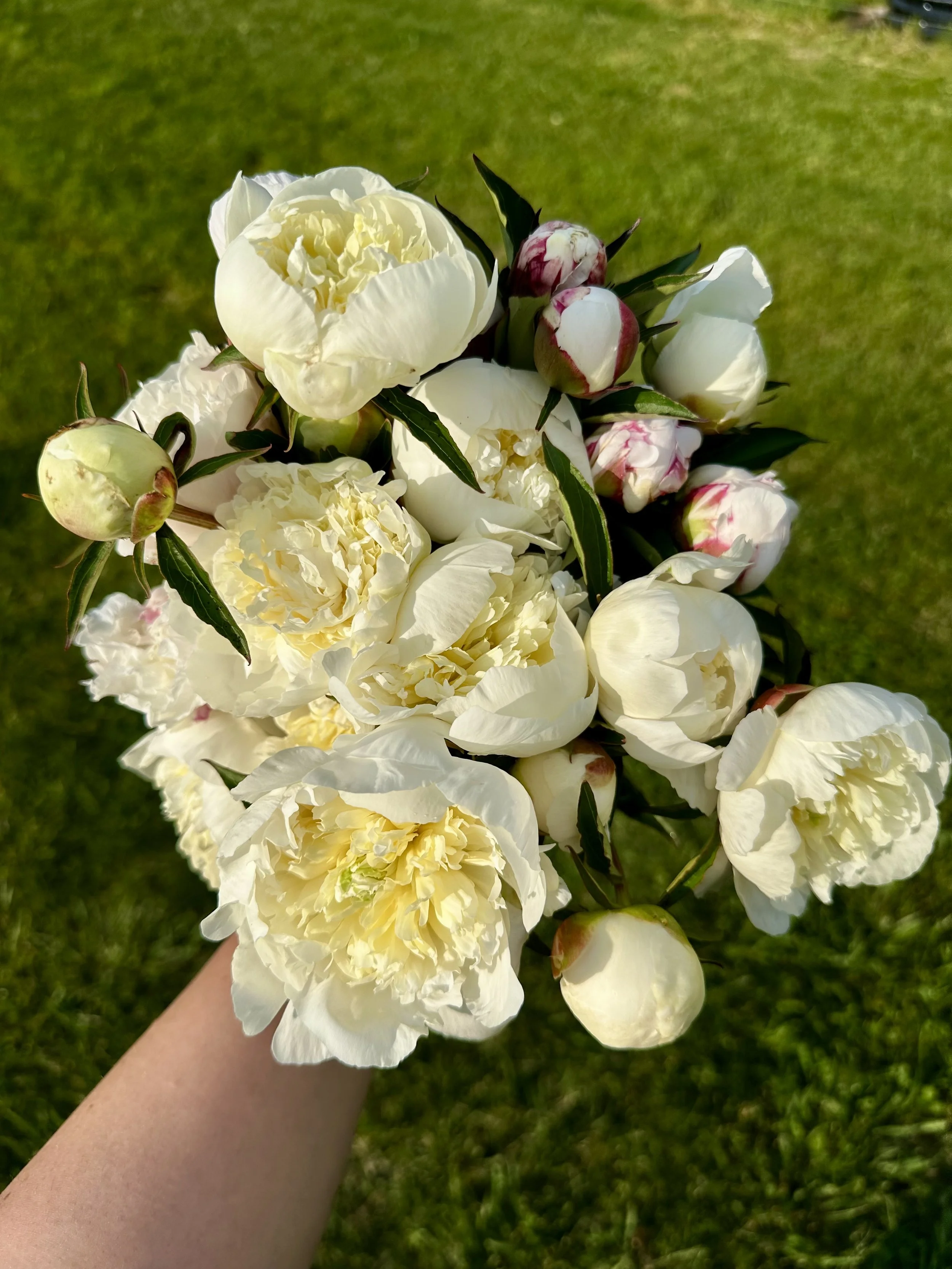Sharing Light Through Flowers
When grief feels heavy, flowers remind us that beauty still blooms. A story of faith, healing, and sharing light through Jesus.
Today is a we’re going to talk about the hard things kind of day. Back in April, I shared in my Blooming in the Valleys post that we don’t talk about the hard stuff enough — the valleys, the unraveling, the moments when quitting feels like the only option. But maybe if we did, we’d feel a little less alone in them.
So today, I’m choosing to be vulnerable again. I want this to be a safe place on the internet — a place where the raw, heavy, and honest can live alongside the beauty. If you are walking through something right now and need prayer, please reach out. I will show up for you.
This past week has been heavy. Between the anniversary of 9/11, the heartbreaking assassination of Charlie Kirk—a fellow brother in Christ—and yet another devastating school shooting, I’ve carried a grief that seemed to press on my chest with every headline and memory. My heart ached for his wife and children left behind, and in their loss I couldn’t help but remember my own.
That’s what a significant loss or trauma tends to do to all of us, isn’t it? It stirs up our own pain and suffering, the grief we’ve carried, and it reminds us in a raw way of what another now has to face. A new young widow. Two children who will grow up without their father.
I lost my dad when I was just four years old, and even now at 36, grief still finds me in unexpected ways. And now, two more children in the world will walk through the same heartbreak I know too well. But I’m here to tell you: there is hope. There is restoration. There is freedom. Even when, in the natural, we don’t understand.
When words fail, I often end up in the flower garden. This week was no different. I prayed, I cried, I cut blooms, and in the middle of it all the flowers held space for me. They always have—through the hardest moments of my life, through postpartum seasons, through both grief and joy. Flowers remind me that beauty and brokenness can exist together, and that hope can still bloom even in the darkest places. That you too can heal, if you take the time to process and walk through that healing.
When I began writing here, I wanted it to be a place of honesty—a space where I could process and share my experiences. Not just as a flower farmer and designer, but as a human. I am a wife, a mother, a daughter, a friend—and my story is real. I’ve walked through significant pain, loss, and trauma in my own life, and I know what it feels like to sit in the valleys. I wanted this to be a place where my testimony could shine through in a raw and authentic way. And while I don’t want to dwell on grief or heaviness—that’s where we can get stuck—I do want to speak about the freedom, healing, and joy that Jesus has given me in place of sorrow. And if a message of hope and light even touches just one person, then it was all worth it. My vulnerability was worth it.
The words of Isaiah have been on my heart since last Tuesday’s events:
“To appoint unto them that mourn in Zion,
to give unto them beauty for ashes,
the oil of joy for mourning,
the garment of praise for the spirit of heaviness.”
— Isaiah 61:3 (KJV)
This scripture has been foundational in my own healing and in the work I’ve pursued since 2016 to help end human trafficking. The brokenness and trauma I’ve lived through, and the healing I’ve experienced through Jesus, has shown me firsthand that God can restore anything. I am living proof that He can redeem grief, heartache, and trauma.
On Sunday, my pastor said something that pierced my heart. Reflecting on Charlie Kirk’s death, he asked: “Because I share my beliefs openly—because I think differently than some people do—are there those who believe my children don’t deserve to grow up with a father?” That question wrecked me. As a child who grew up without a father, I know the pain of that reality. And no child deserves it. The very fact that thoughts like that exist shows how desperately our world needs love, light, and healing.
I also want to be clear — this is not about politics, it’s about humanity. It’s spiritual. A man was murdered for exercising his First Amendment right to use words, not violence. That reality is heavy because it reveals how far we’ve drifted from compassion and understanding.
And it’s not just isolated tragedies—it’s the steady decline of mental health in our nation. We were never designed to witness horrific acts of violence, scroll past them a minute later, and then carry on like nothing happened—packing lunches, doing the dishes, answering emails. That weight adds up. No one is immune to the strain, and the heaviness is real.
That’s why prayer, community, and intentional care matter so much right now. We need to check in on our friends and families. We need to carve out space for rest and self-care in a digitalized world that constantly demands more of us. And we need to remind ourselves that there are ways to combat this darkness—through faith, through honest conversations, through gathering together, through serving others, and yes, sometimes even through something as simple as flowers.
And we also need to remember that everyone grieves differently. Some cry, some withdraw, some get busy, some need to talk it out. There is no single “right way” to walk through grief, so let’s not pass judgment on each other. Instead, let’s extend compassion, patience, and understanding—because we’re all carrying burdens, and kindness costs nothing.
I want you to know this: you matter. Your life has value, your story has meaning, and this world is better with you in it.
Out of all that heaviness, I felt led to cut every sunflower we had ready—about 100 stems—wrapping them into bright, golden bouquets and placing them in our stand. Free for anyone who needed them, or available by donation. My intention wasn’t to raise money, but to push back against the darkness with light. Still, the community showed up in such a beautiful way. Together we raised $55 for The House of Promise, a local organization providing safe housing and resources for survivors of trafficking. I’m deeply grateful for the way our neighbors responded and the way this small act became something bigger than I imagined.
And if you’re reading this and carrying a heavy heart, please know you don’t have to walk through it alone. If you need prayer, reach out — I would be honored to pray with you and for you. And if you’re seeking a local church home in the Holt/Lansing/Mason area, you always have a seat at Journey Life Church in Holt, under pastors who care deeply about this community and about your heart. You belong, and you are not alone.
Maybe that’s why this phrase has been echoing in my heart lately: sharing light through flowers.
Flowers don’t erase loss, but they whisper hope. They don’t undo the darkness, but they remind us it never fully wins. On a week like this, I needed that reminder—and I believe others did too.
And in the middle of sorrow, we also found joy. Yesterday our beautiful son turned two. Celebrating his life was a blessing beyond measure. Gathering with family, hugging tighter, saying “I love you” and “I’m proud of you,” attending church and leaning into the message—all of it reminded me that even in a broken world, there is still so much to be grateful for.
That’s the heartbeat behind the blooms: there is too much evil in the world, and I refuse to let it win. I will keep planting, cutting, wrapping, and sharing light through flowers—for myself, for my community, and for anyone who needs the reminder that hope still blooms. And ultimately, that hope is always found in Jesus.
Sharing light through flowers,
Alex
How to Plant Peonies: A Farmer-Florist’s Guide to the Queen of the Garden
Peonies are timeless, elegant, and worth every ounce of patience. Here’s a full behind-the-scenes look at how we planted over 150 peony roots at Bede’s Blooms—from spacing and fertilizing to lessons learned (like why you really should sweep your landscape fabric).
Planting Peonies: A Love Letter and Grower’s Guide
This post may contain affiliate links. If you click through and make a purchase, I may earn a small commission at no extra cost to you. I only recommend products I use and love here on the farm.
There’s just something about peonies.
The soft, blush-pink blooms. Their ruffled elegance. The scent—heady and nostalgic, like something out of a dream. For me, peonies aren’t just flowers—they’re a soul-stirring presence in the garden and one of the greatest joys of being a flower farmer. Without a doubt, they are my favorite flower.
Last fall, I took the leap and planted our largest-ever peony field here at Bede’s Blooms + Co. This blog is part love letter, part how-to, and part behind-the-scenes peek at what it really takes to get peonies established on a flower farm.
If you’ve ever dreamed of growing peonies—or if you’re just starting to fall in love with these romantic blooms—this post is for you. Whether you’re a backyard gardener or a farmer-florist mapping out your first field, I’m sharing everything I learned from planting 150+ peony roots on our Michigan farm: from sourcing and spacing to root size, first-year harvests, and all the tools and tips that made the process smoother.
Why Peonies Deserve a Place in Your Garden (or Your Business)
They’re perennials – plant them once, and they’ll bloom for decades.
They get better with age – larger, fuller blooms year after year.
They command premium prices – stems regularly sell for $3–6 wholesale, and even more at retail or for events.
They bloom during peak wedding season, making them a dream crop for farmer-florists.
That said, they do require patience. Peonies can take 2–3 years to establish, and while the wait is worth it, it’s important to set expectations—especially if you’re hoping for first-year blooms.
A Note on Root Size and First-Year Harvesting
Most growers will tell you not to harvest from peonies in their first year. And generally? That’s good advice.
But here’s the nuance: I invested in larger, 6–8 eye roots instead of the standard 2–3 or 3–5 eye divisions. I experimented—harvesting from about half of my 6–8 eye plants in the first year. The result? Beautiful, large blooms. Not quite as robust as my three-year-old plants, but certainly strong enough for arrangements.
In short: root size matters, and not all first-year harvests are created equal. I also know other growers who’ve harvested cautiously from year one with great results.
✨ Farmer tip: If you’re planting peonies for production, consider investing in higher-eye count roots. The upfront cost is greater, but so is the payoff.
Establishing Peonies: The First Year is Everything
Peonies don’t love being rushed, so the first year is all about establishment. Even if you’re not harvesting blooms, what’s happening underground is just as important.
🌱 Key Summer Care Tips (Especially in Michigan):
Water deeply and consistently in July, as this is when the plant shifts energy to root and bud development for the following spring.
Aim for 1–1.5 inches per week at the base (no overhead watering—botrytis loves wet leaves).
Deadhead spent blooms but leave all foliage intact.
Fertilize lightly in early July with a low-nitrogen, balanced fertilizer like 5-10-10 or 10-20-20. Apply directly to the soil around the plant—not on the leaves—to avoid fungal issues. It’s like a nutrient smoothie for next year’s blooms. Avoid fertilizing after mid-July to prevent weak late-season growth.
📅 Stay tuned: I’ll be sharing a full fertilizing schedule, product links, and my compost tea recipe in next week’s blog post!
Disease Control: Beating Botrytis
If you’re seeing:
Blackened buds
Wilting stems
Gray mold or fuzzy mildew...
You might be dealing with botrytis blight. Here’s how I manage it:
Clean up: Remove all infected plant parts and dispose—don’t compost.
Sanitize your shears using a solution of bleach or rubbing alcohol.
Treat: Use organic options like:
Serenade or Actinovate - I use this one: Trifecta Crop Control Concentrate
Improve airflow: Thin surrounding plants, avoid overcrowding.
🍂 In fall: Cut foliage to the ground after frost, and discard (do not compost) if there were disease issues. Apply compost (I love using Dairydoo + bone meal) or bulb fertilizer around the base—not on the crown—especially if your soil is lean.
🌸 Step-by-Step: How We Planted Our Peony Field (and What We’d Do Differently)
There’s no one “right” way to plant peonies, but this was our process. We learned a lot in the trenches—some wins, some lessons—and we’re sharing it all here to help your future planting go a little smoother.
Step 1: Measure Your Space First
Before you even order roots, take the time to measure your growing area. Peonies need generous spacing and good airflow, so you’ll want a clear idea of how many plants you can comfortably fit.
🌸 Spacing Guidelines by Peony Type
Herbaceous Peonies (garden peonies):
▸ 36–48 inches apart (center to center)
▸ Allows for mature clump size and good airflow to reduce disease
Intersectional (Itoh) Peonies:
▸ 36–48 inches apart
▸ These hybrids also form large, bushy plants
Tree Peonies:
▸ 48–60 inches apart
▸ These are woody shrubs that require more space and light
🌱 Why Proper Spacing Matters
Air circulation prevents fungal issues like botrytis
Root development and division potential are maximized
Ease of access for weeding, fertilizing, and harvesting
Sunlight reaches all parts of the plant, improving bloom quality
Once you know your dimensions, you can calculate how many roots to order and how much landscape fabric you'll need.
I highly recommend investing in one of these open reel measuring tapes, we have used this for so many projects around our house and in the garden.
Step 2: Source Reputable Peony Roots
We placed our order in early summer for fall delivery. A good rule of thumb? Order a flower when it’s blooming for you. That means now (while your peonies are fresh in memory) is a great time to order for fall planting.
We currently have a couple of different wholesale accounts, but during our first year of purchasing, we ordered through Alaska Perfect Peony. They connected us with the closest peony root wholesaler in our area, and I was incredibly impressed with how the roots arrived—the size and quality exceeded my expectations.
6-8 eyed Duchesse de Nemours peony root
Step 3: Prep the Site
We tilled our entire planting area, but an alternative method is to cover the space with silage tarps for 4–6 weeks beforehand to kill off grass and weeds. Once prepped, we added compost to enrich the soil.
If you’re looking for a no-till option (we usually opt for the same—but we didn’t get a chance to lay our silage tarps in time.) — here is a brief breakdown of what we do:
How to Use Silage Tarps to Prep a Garden Bed:
Clear the Area (Optional): Mow or cut down any tall vegetation.
Lay the Tarp: Spread the silage tarp black side up over the area.
Secure It: Weigh down the edges with sandbags, bricks, or soil to prevent wind from lifting it.
Leave in Place: Keep the tarp on for 4–6 weeks (longer if possible) to smother weeds and warm the soil.
Remove & Plant: Take off the tarp when you're ready to plant—no tilling needed!
Tip: Be mindful of the size—if you’re moving the silage tarp by yourself, it’s best to stick to something no larger than about 50 x 50 feet. Anything bigger typically requires a tractor to handle.
Step 4: Lay Landscape Fabric
We used Dewitt brand landscape fabric and calculated the size based on the total growing space. Supplies included:
Landscape staples (we placed them every 2–4 inches for extra durability)
Heavy-duty scissors (we’ve had these since our first season, great investment & used regularly on the farm)
While a single large piece of fabric would be ideal, cost was a factor, so we overlapped pieces by 8 inches to create continuous coverage.
Step 5: Mark and Burn Planting Holes
Use a large measuring tape and spray paint to mark each hole, spaced 4 feet apart.
A metal planter (about 10" wide) served as our hole template.
Using a handheld torch and the metal planter, we burned clean planting holes into the fabric.
We use the Bernzomatic Trigger Start Torch and fuel it with a can of Coleman propane from our camping stove setup.
Step 6: Dig and Prep Holes
Dig about 8 inches deep, ensuring the peony crown will sit with its “eyes” (buds) no more than 2 inches below the surface.
We added alfalfa pellets to each hole for a nutrient boost—rich in nitrogen, potassium, and phosphorus.
Step 7: Plant Each Root
Depending on the size of your root, you may need to widen or shape your hole so the full root structure fits without crowding or curling. Lay the root flat with eyes facing upward.
Step 8: Backfill and Sweep
Cover roots with compost and soil, gently firming it down.
Important: Sweep off any excess soil from the landscape fabric. Dirt left on fabric = weed chaos come spring.
Post-Harvest: How to Store Peonies for Later Use
One of the best-kept secrets in floral work? Dry storing peonies.
You can harvest them at marshmallow stage, wrap them in newspaper, and refrigerate for up to 6 weeks for later use. It’s how many designers manage early June blooms for late July weddings.
I’ll be sharing a deeper dive on how to dry store peonies soon—sign up for the newsletter if you're curious!
Final Thoughts: Beauty That Waits for You
Planting peonies taught me a lot about slowing down, trusting the process, and investing in beauty that takes its time. These flowers ask us to think long-term—to believe in what we can’t see yet. That kind of growing is the most magical of all.
If you’re dreaming of your own patch of peonies, this fall is the time to start.
🌸 Peonies are a love story written underground. Here's to the flowers that are worth the wait.
With love and dirt under my nails,
— Alex💌 Want more growing tips and behind-the-scenes peeks at flower farming? Subscribe to the Bede’s Blooms newsletter or follow us on Instagram @bedesblooms for weekly updates from the field.


